| |
Cryptocoryne ×timahensis Bastmeijer |
| (Document service) |
In the mid 90's, the Singapore Science Center published a picture of a Cryptocoryne on their website on threatened plants which was ascribed to C. griffithii. The
first Cryptocoryne on the Red List in the Internet! But it didn't match very well
the European idea on C. griffithii. In 1999 there
was an opportunity to study the plant in its natural habitat with help of the National
Board. The present idea on this plant is that it is an (natural) hybrid between C. nurii and C. cordata,
both growing in Johore (Malaysia) but not in Singapore.
Click on the picture to get the full image (ca. 50 kB) |
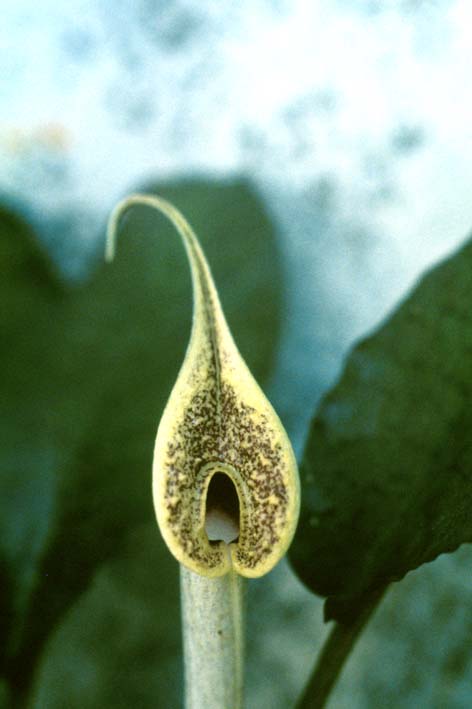 |
Limb of the spathe of Cryptocoryne ×timahensis. Note the heart shaped base of the limb and the
reddish protuberances over the whole surface.
coll. B807 |
|
 |
Dammed pool in the Bukit Timah National Park.
The plants grow on both sides of the dam, which is constructed during the Japanese
occupation in WW2.
coll. B807
|
|
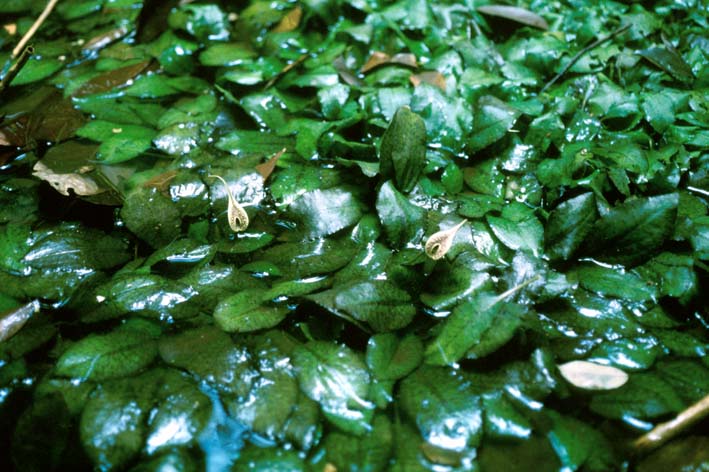 |
View at the right side (left picture). The water
depth is 25 cm over a soft muddy bottom. Towards the edge of the pool, the plants are
smaller and the inflorescence's shorter.
coll. B807 |
|
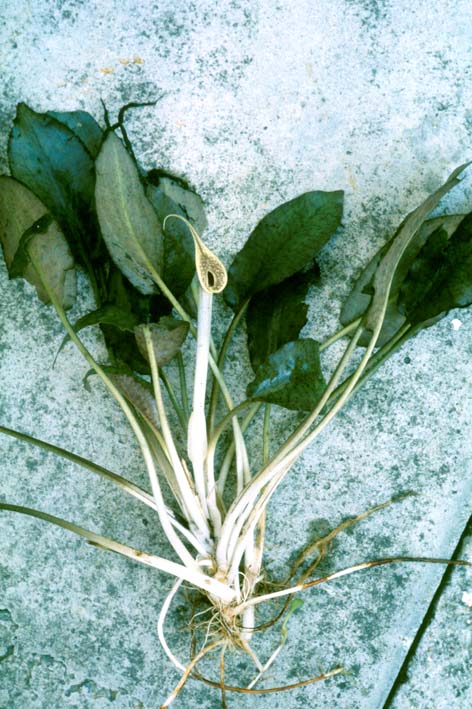 |
Uprooted plant from the pool. Overall length c.
25 cm. The leaves are a bit marmorated. Note the hairy algae at the top of the leaf.
coll. B807
|
|
| |
|
|
|
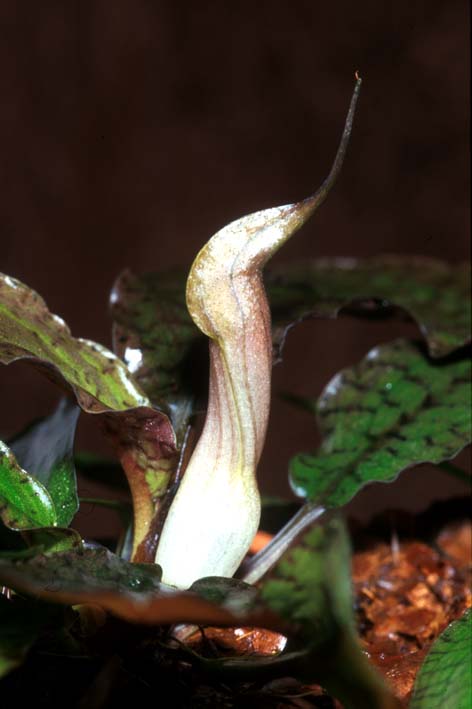 |
Cultivated specimen of C. × timahensis. The bud of the inflorescence shows the typical
curve at the upper part of the spathe. The same is seen in C.
nurii.
coll. B807, cult. W
photo van Wijngaarden |
|
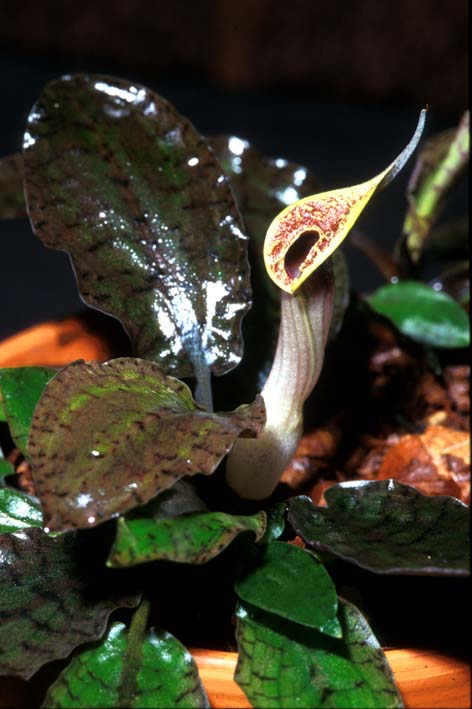 |
In emerged cultivation, the leaves
keep the dark brown stripes (marmorated) and can even get brownish. The plant size is
considerable smaller.
coll. B807, cult. W
photo van Wijngaarden
|
|
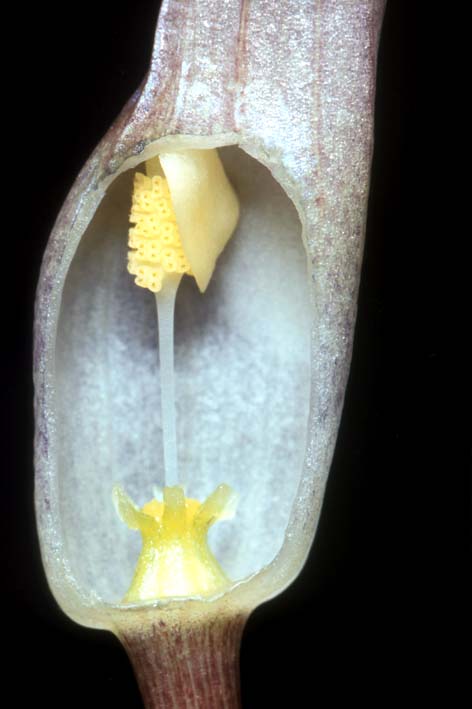 |
Longitudinal section of the lower
part of the spathe (the kettle).
coll. B807, cult. W
photo van Wijngaarden
|
|
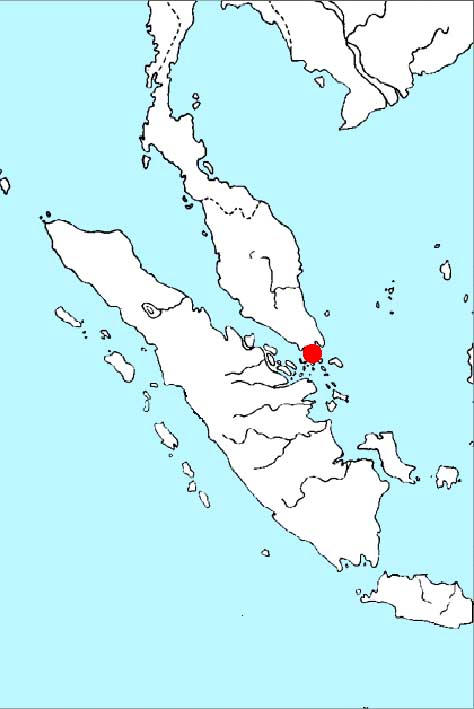 |
C. ×timahensis is only known from a pond of c. 10 by 3 m in the Bukit Timah Nature Reserve in Singapore. |
|
| |
|
|
|
The two other native Cryptocoryne species from Singapore are C. ciliata, which is said to be extinct over there,
and C. griffithii which grows in the swamps. This Singapore plant was collected a
couple of times but was always regarded as C. griffithii. This mistake may be
explained by the lack of recent collections from the swamps and/or a misunderstanding of
the real identity of C. griffithii.
The locality in the Bukit Timah Nature Reserve is remarkable. C. ×timahensis grows near the top of the hill in a very tiny
stream in an artificial pond which is formed by damming the stream. There are - up to now
- no other localities known, so this plant is extremely vulnerable for any changes in the
hydrological situation.
Another aspect of C. ×timahensis is that the
plant is never found fruiting. Pollen analysis turned out the the plant is fully sterile,
so one has to deal with a hybrid (hence the cross in the name). Looking at the form, colour
and structure of the limb of the spathe and the leaves, best candidates are C. cordata and C. nurii. These however are native in southern Johore (Malaysia). Even more
remarkable is the chromosome count 2n = 54 for C. ×timahensis.
You may have expected 2n = 51. based on the number 17, as normal for malayan
species.
C. ×timahensis is quite good to keep in
emerged cultivation. Potted in beech tree litter and with soft, slight acid water the
plant thrives well. Probably it will do also in more sandy clay soils. Up to now, the plan
isn't tested for submersed cultivation.
Surprising was to find a picture of what is now C. ×timahensis in a popular book for horticulturists, Botanica, with the advise to cultivate it at the
edge of your garden pond.
Updated August 2001 |
Literature.
- Bastmeijer, J.D. and R. Kiew, 2001. A New Cryptocoryne Hybrid (Araceae) from
the Bukit Timah Nature Reserve, Singapore. Garden's Bulletin Singapore 53(2001): 9-17.
- Cheers, G. et al (eds), 1999. Botanica. Koenemann, Keulen (dutch edition).
- Tan, H.T.W., I.M. Turner, Y.C. Wee and K.S. Chua, 1994. Plants in the Singapore Red List.
Singapore Scientist 72: 26-32.
- Tan, H.T.W., 1995. A Guide to the Threatened Plants of Singapore. Singapore Science
Centre, Singapore.
|
|
|
|
 |
|
|